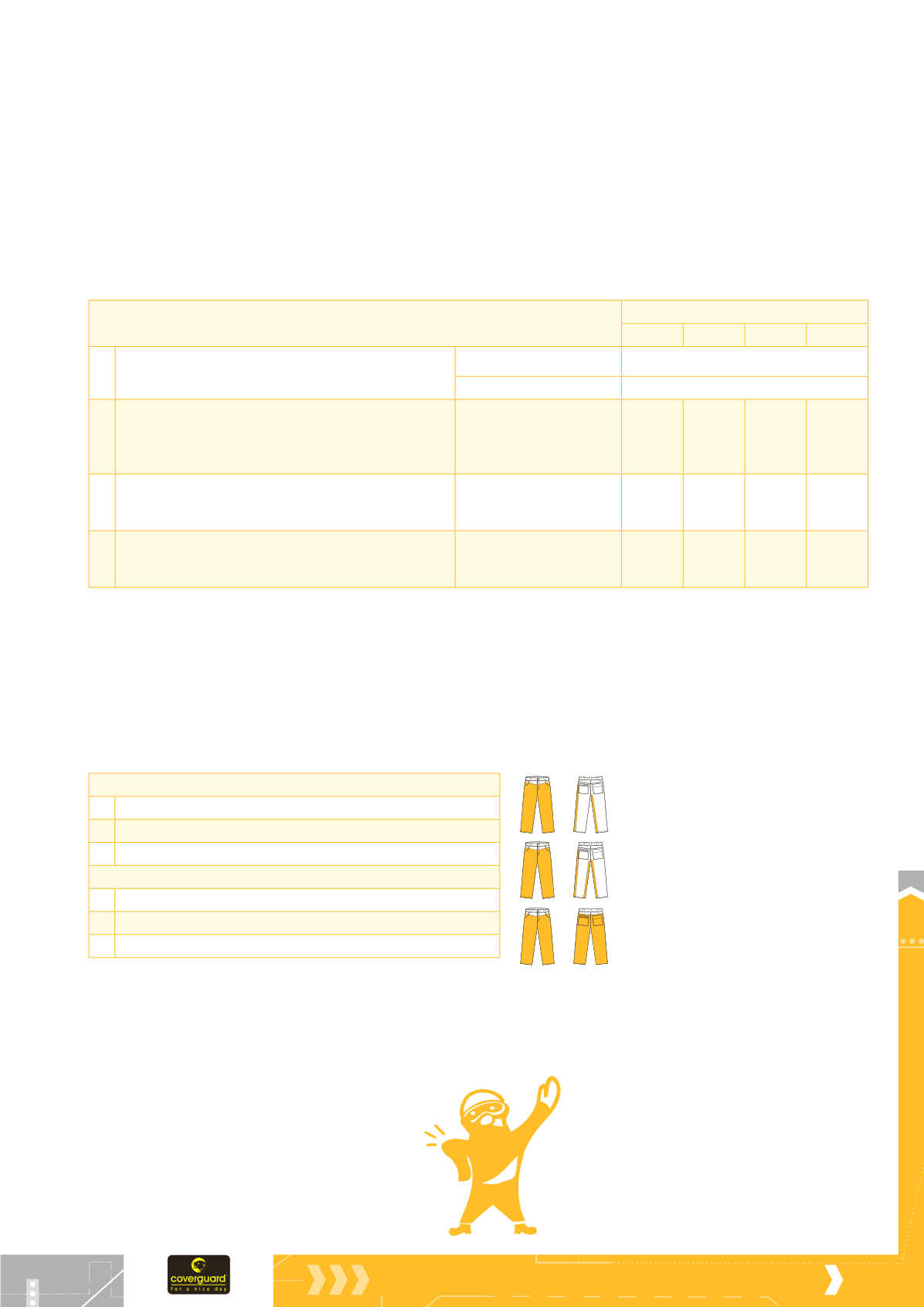
345
The protective capabilities of chemical resistant coveralls belonging to category III personal protective equipment
Type 6: Performance requirements for protective clothing offering limited protective performance against liquid chemicals
(EN 13034)
Type 5: Performance requirements for protective clothing providing protection to the full body against airborne solid
particulates (EN ISO 13982)
Type 4: Performance requirements for protective clothing providing protection against high pressure spray chemicals
(EN 14605)
Type 3: Performance requirements for protective clothing tested for protection against high pressure liquid chemicals
(EN 14605)
Type 2: Performance requirements for protection against liquid and gaseous chemicals, including liquid aerosols and
solid particles by “non-gas-tight” protective clothing (EN 943-1)
Type 1:
Performance requirements for protection against liquid and gaseous chemicals, including liquid aerosols and
solid particles by “gas-tight” protective clothing ((EN 943-1, EN 943-2)
EN 531 Protective clothing for workers exposed to heat and flames
Types of thermal protection capabilities
Performance levels
1.
2.
3.
4.
A)
Limited flame spread
surface ignited with a horizontal flame, edge
ignited with vertical flame for a 10 sec. period
Duration of after-burn
A ≤ 2 s
Duration of after-glow
A ≤ 2 s
B)
Convective heat
how many seconds does it take for the internal
temperature to rise by 24°C when an 80 kW/m
2
intensity flame is applied
Heat Transfer Index
(HTI)
3 s
< B1 >
6 s
7 s
< B2 >
12 s
13 s
< B3 >
20 s
21 s
< B4 >
30 s
(31 s < B5)
C)
Radiant heat
protection against a heat intensity of 20 kW/m² for
the indicated length of time
Heat Transfer Index
(HTI)
8 s
< C1 >
30 s
31 s
< C2 >
90 s
91 s
< C3 >
150 s
151 s
< C4 >
E)
Large splashes of molten metal
The amount of 1400°C molten iron which does not
bring about a change to the surface of the clothing
Amount of drops (g)
60 g
< E1 >
120 g
121 g
< E2 >
200 g
201 g
< E3
-
Antistatic properties
Working environments with fire or explosion risks require general work apparel and protective clothing which prevent sparks
caused by electrostatic charge. According to standard EN 1149-1 the surface resistance of antistatic clothing may not exceed
5x10
10
Ω in 25% humidity at a temperature of 23°C. Obviously to achieve the required level of protection it is essential that
the protective clothing is adequately earthed. In the case of textile protective clothing the charge is released via conductive
fibers woven at, at least, 1cm intervals into the fabric. In the case of non-woven fabrics this is achieved through an antistatic
coating by which electricity is conducted to the water vapor in the air (this antistatic effect can not be achieved in humidity
of less than 25%).
Levels of protection by protective clothing against hand-held chainsaws (EN 381-5)
Types (according to size of protected surface)
A front + 5 cm width on back right on both sides
B additional protection on back right (5 cm)
C all round, complete protection on both sides
Class (according to chain speed of saw)
1 20 m/s
2 24 m/s
3 28 m/s
Protective gloves against cuts and stabs by hand knives (EN 1082)
- metal mesh material with rings of a max. 32 mm diameter and each connected to 4 other rings
- tensile strength no rings should come apart when 100 N of force is applied
- penetration test with 1,050 g metal blade dropped from a height of 250 mm
- correct sizing with length beyond the wrist and with secure rear fastening
COVERGUARD
®
• SPECIAL CLOTHING


